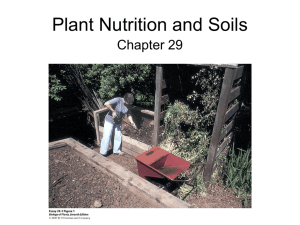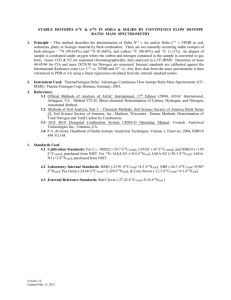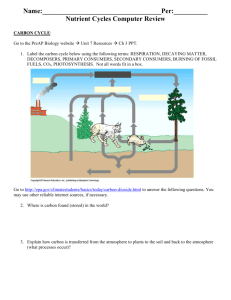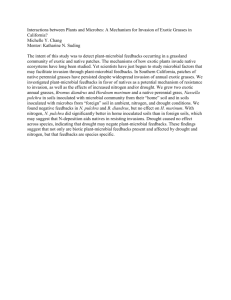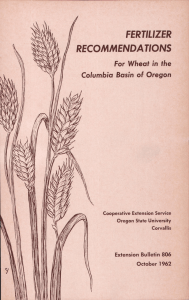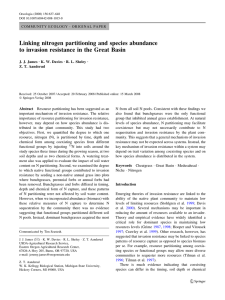Identification of C3 and C4 plants was done visually and confirmed
advertisement
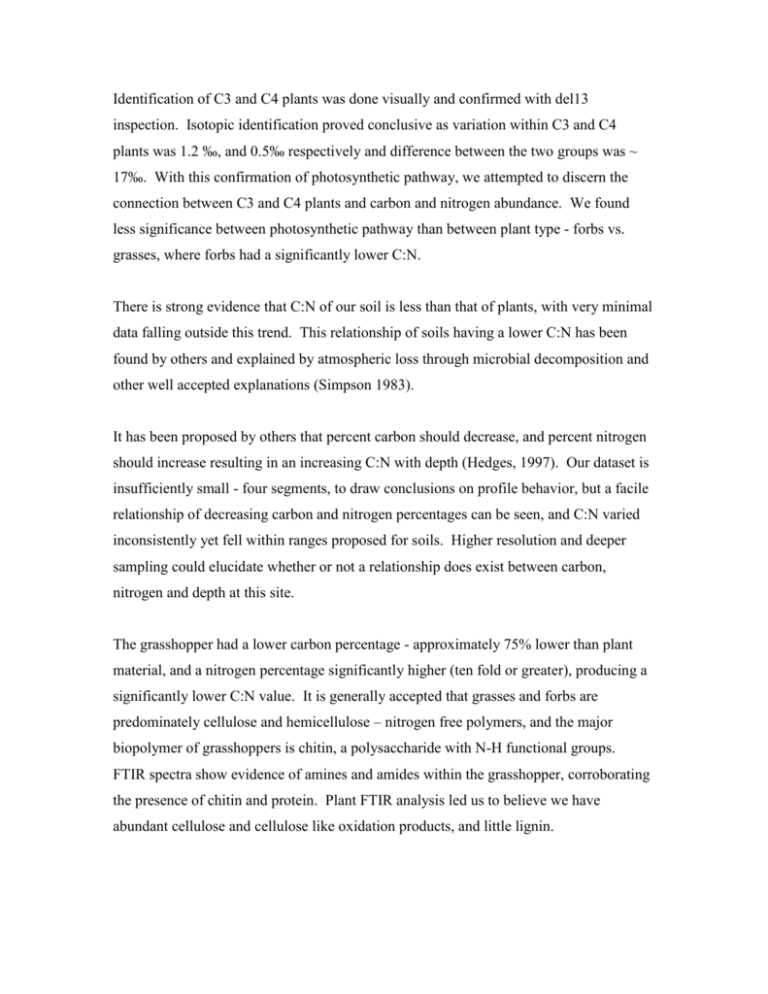
Identification of C3 and C4 plants was done visually and confirmed with del13 inspection. Isotopic identification proved conclusive as variation within C3 and C4 plants was 1.2 ‰, and 0.5‰ respectively and difference between the two groups was ~ 17‰. With this confirmation of photosynthetic pathway, we attempted to discern the connection between C3 and C4 plants and carbon and nitrogen abundance. We found less significance between photosynthetic pathway than between plant type - forbs vs. grasses, where forbs had a significantly lower C:N. There is strong evidence that C:N of our soil is less than that of plants, with very minimal data falling outside this trend. This relationship of soils having a lower C:N has been found by others and explained by atmospheric loss through microbial decomposition and other well accepted explanations (Simpson 1983). It has been proposed by others that percent carbon should decrease, and percent nitrogen should increase resulting in an increasing C:N with depth (Hedges, 1997). Our dataset is insufficiently small - four segments, to draw conclusions on profile behavior, but a facile relationship of decreasing carbon and nitrogen percentages can be seen, and C:N varied inconsistently yet fell within ranges proposed for soils. Higher resolution and deeper sampling could elucidate whether or not a relationship does exist between carbon, nitrogen and depth at this site. The grasshopper had a lower carbon percentage - approximately 75% lower than plant material, and a nitrogen percentage significantly higher (ten fold or greater), producing a significantly lower C:N value. It is generally accepted that grasses and forbs are predominately cellulose and hemicellulose – nitrogen free polymers, and the major biopolymer of grasshoppers is chitin, a polysaccharide with N-H functional groups. FTIR spectra show evidence of amines and amides within the grasshopper, corroborating the presence of chitin and protein. Plant FTIR analysis led us to believe we have abundant cellulose and cellulose like oxidation products, and little lignin. Isotopic analysis of the grasshopper found a δ13C value in between that of C3 and C4 plants, which in combination with literature and field observation lead us to believe this insect to be a “generalist” forager – that is to not have a preference between the C3 and C4 plants at our site. The soil shows a 13C enrichment in between those of our C3 and C4 plants, however is closer in value to the minority C3 plants. We attribute this to fractionation through decomposition and to the fact that we are studying an ecosystem in transition, in which we do not know which grass was dominant two years ago. Keeping in mind that the δ13C signal of soils might be from litter/exudates more than ten years old, we attempted to see if there was a change in signal with depth, however no relationship could be established. Detecting organic material with FTIR in the soil was difficult due to mineral and water overshadowing, however we were able to attribute some peaks to aliphatic compounds and saw no evidence of aromatic compounds, which makes sense when you consider that the contributing material – grasses, and forbs, showed the same patterns. We found that combining mass and infrared spectrometries does well in providing simplistic insight into the cycling of carbon and nitrogen through the atmospheric, plant, insect, and soil pools of an ecosystem. Obviously, these pools do not cover all aspects and have holes between them, however we believe that much can be acquired by combining mass spectrometry and FTIR if you measures to allocate sources and sinks within an ecosystem.

